Into Antarctica! Oslo and the Fram
Zagan the motorhome’s being encouraged to leave Norway by the deep grey clouds spilling heavy droplets onto his roof at Bogstad Camping (N59.96516,E10.64168), in Oslo. We’ve spent 10 weeks travelling Norway, from Nordkapp, Senja and the Lofotens in the Arctic, down the wonderful coastal Route 17, before the long E6 south to Trondheim, over the twisting Trollstigen to the towering beauty of Geirangerfjord, up narrow roads to the best campsite in the World (probably) at Briksdal, more twisting roads and ferries before going up and over the longest road tunnel in the world at Laerdal, out for fish and chips at Bergen, rounding Hardangerfjord, chilling out with salmon in Sand, climbing the fearful (for me) powerfully beautiful and fierce Preikstolen and finally swooping and hollering around the fast coastal roads up to Oslo. What a ride folks, what a ride. The Norway experience has been sensational.
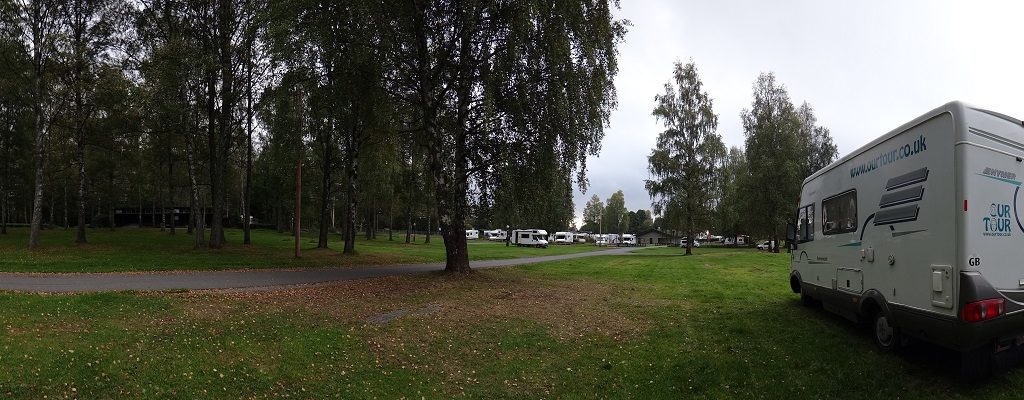
Zagan at Bogstad Camping, Oslo. There are loads of motorhomes here, but we’re pretty much alone in the ‘no hook-up’ area
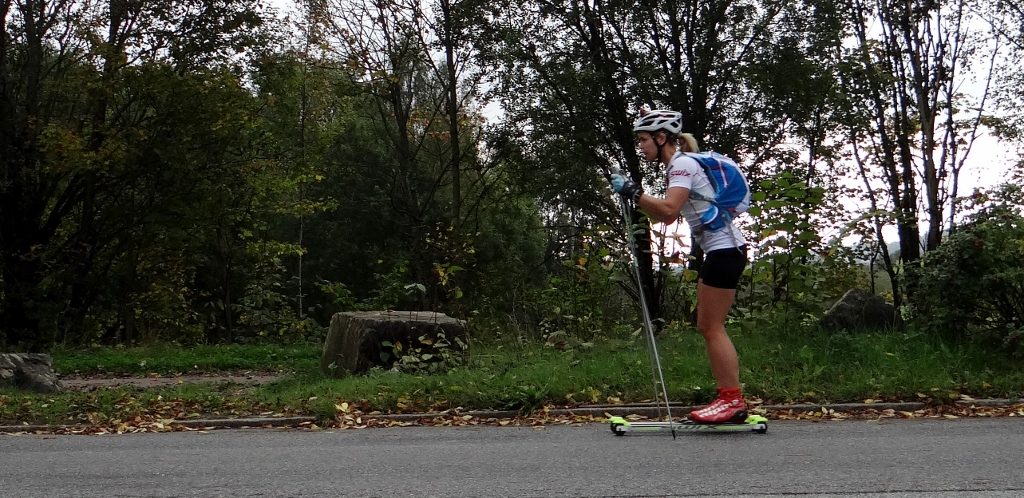
Loads of folks were spending their Sunday morning Nordic ‘summer’ skiing outside the campsite
Yesterday we took a look at Oslo, only a glimpse of course, but enough to get a feel for the city, and we got up close with an iconic piece of history, the ship which took Amundsen to the Antarctic during the race with Scott to the South Pole. The gathering autumn’s also serving to usher us a little way further towards the equator, although we’re heading for the UK before we do, so Zagan’s solar panel will get a good taste of Northern Europe’s winter gloom this year.
Bogstad Camping’s a few miles out from Oslo, and Oslo itself is well spread out with several of the big sights being miles apart. Although it’s not a huge city, with only half a million folks living here (about the same population as Sheffield), we’re glad we bought 24 hour transport passes from the camp site reception (100 NOK each, about a tenner) rather than individual tickets, as we we took five journeys each yesterday. Charlie could have come with us, we saw plenty of dogs on the busses and the metro, we opted to leave him in Zagan so we could go inside and see the Fram. Not wanting to leave him too long always constrains what we can see and do in a day, but we gave Oslo a fair shot, having already read up in the Lonely Planet, and consulted Trip Advisor’s reviews of the museums and galleries.
Waiting for the number 32 bus outside the campsite reception, we had the luck to get chatting with Bronwyn and Keith, a New Zealand couple travelling in a fifth wheeler, which I was amazed to hear was made in Wales. Coming from Christchurch, they had first-hand experience of the devastation of the earthquake there in 2010. Keith’s description of it had me slack-jawed, as I sat with him in his living room watching a falling road out the window. The black sand Christchurch stands on was liquefied that day, coming up from cracks in the earth like magma; Bronwyn had shifted tons of the stuff from their property. Later on, when we came back from the city, we sat in their cavernous slide-out and were treated to wine and nibbles and stories of travelling and working abroad. Keith’s a software developer and makes lots of use of the iBoost WiFi antenna attached to the outside of their home on wheels.
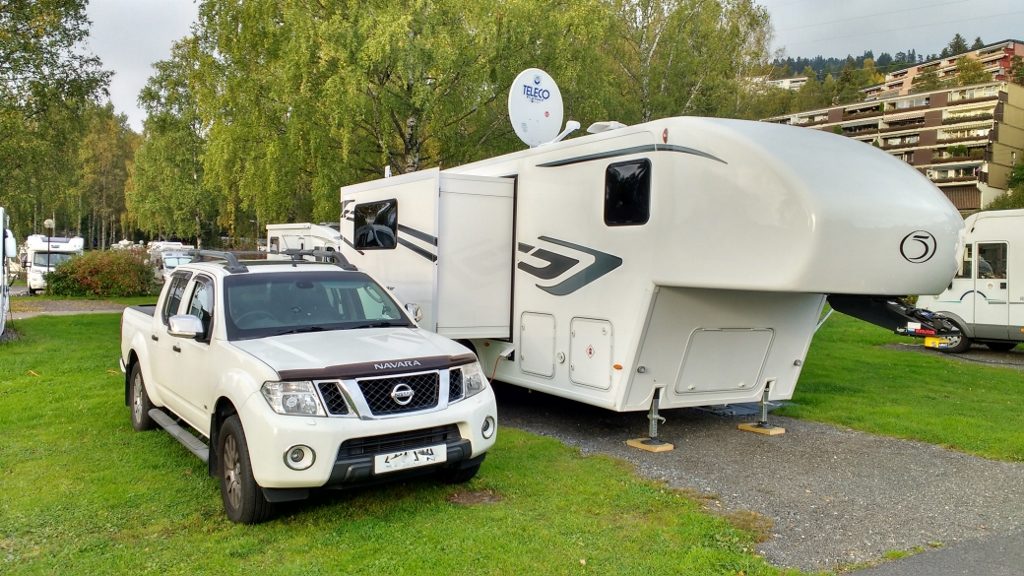
Keith and Bronwyn’s British-Made Fifth Wheeler. An incredible vehicle it is too.
Into the city, we jumped off at the Operahuset, the new Opera and Ballet House, finished in 2007 at a cost of a mere half a billion pounds. The building is a wonder, a wedge of Italian marble and white granite, dipped at one end into the sea and rising at the other for a view of the city’s skyscrapers and the cranes standing tall over various other enormous building projects. Walking all over the thing is the order of the day, really pleasant and enjoyable on a late September Sunday, with just enough folks around for company. Cracking.
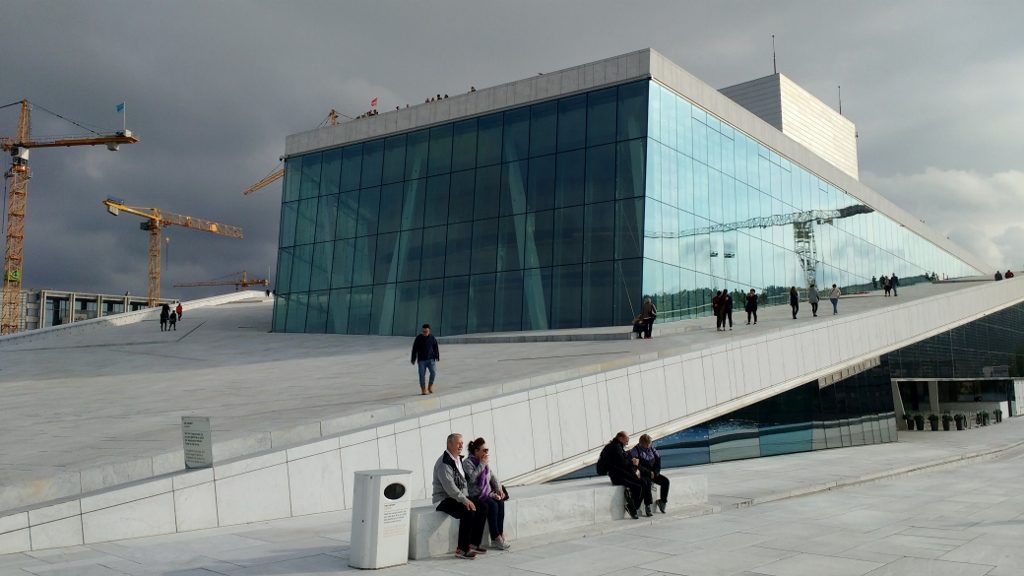
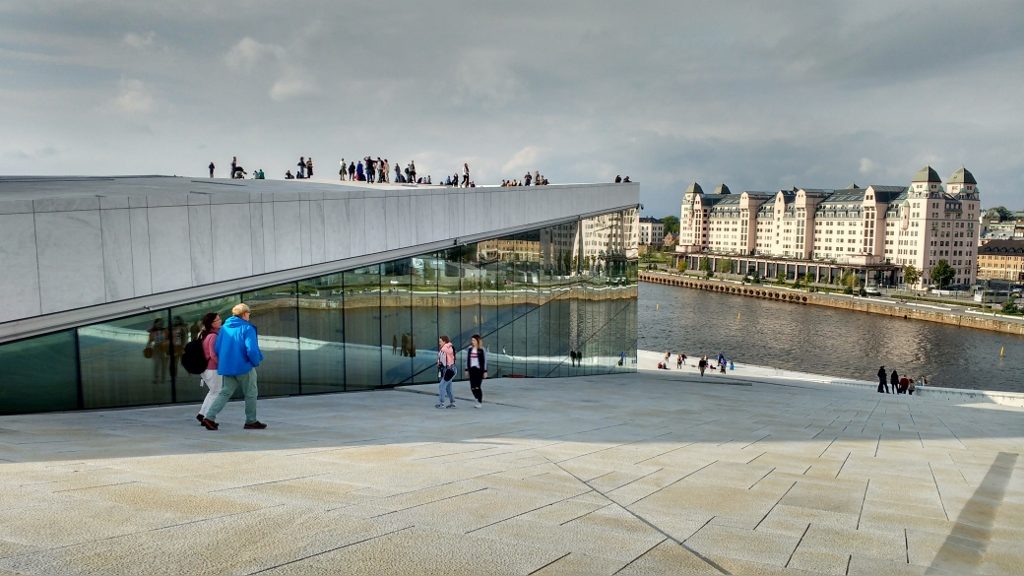
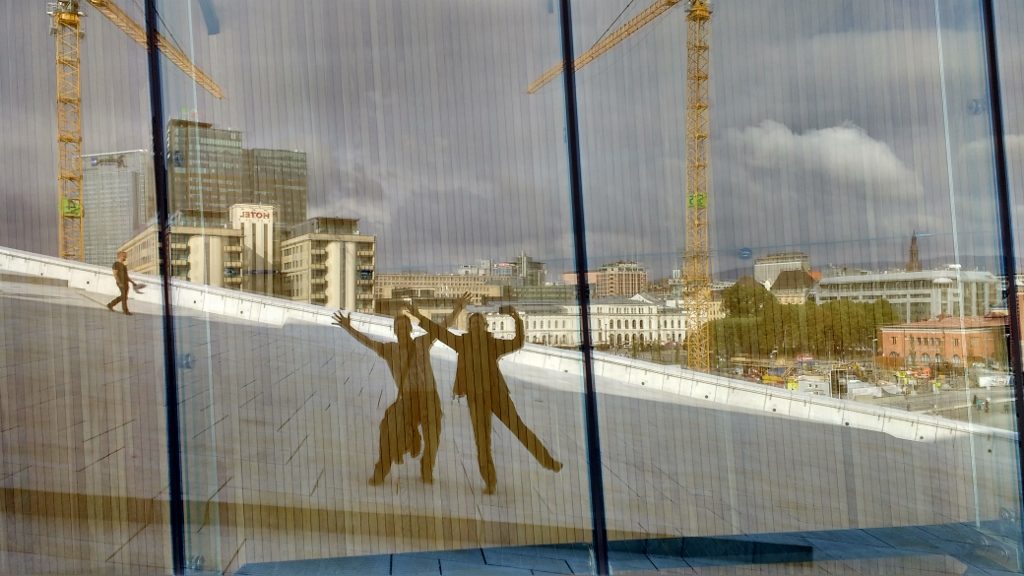
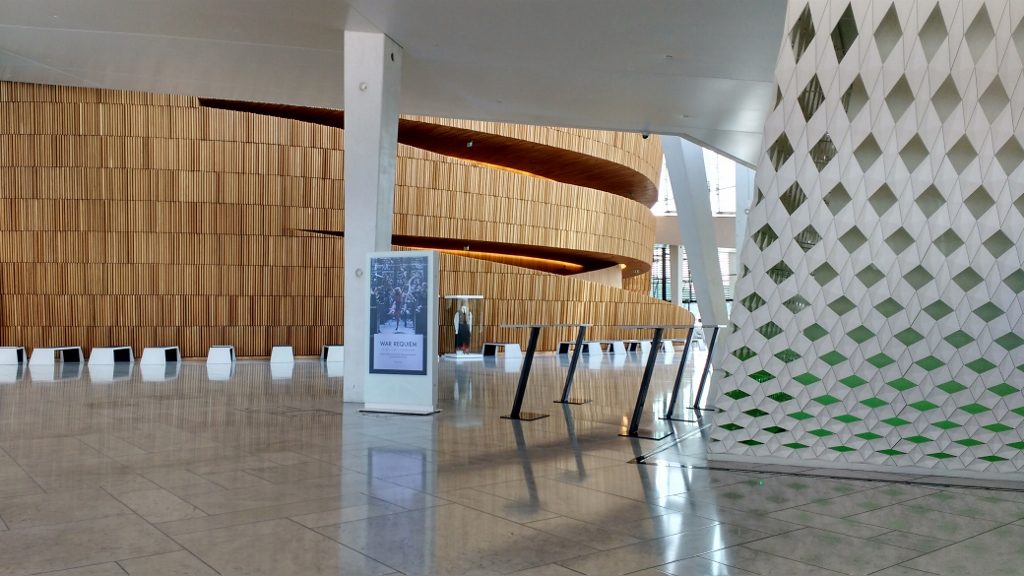
From the Opera house we jumped back on the bus for a half hour ride around the sea to the Fram Museum. Ferries run across the harbour, but they weren’t included in our tickets, otherwise we’d have ridden one of them instead. The Fram Museum won out in a mini competition in Team Zagan between it, the Kon-Tiki Museum, the Nobel Peace Centre, the Viking Ship Museum and the Vigeland Sculpture Park. In fact, it drew with the sculptures, but we were done in when the weather turned later in the day, so it won by default.
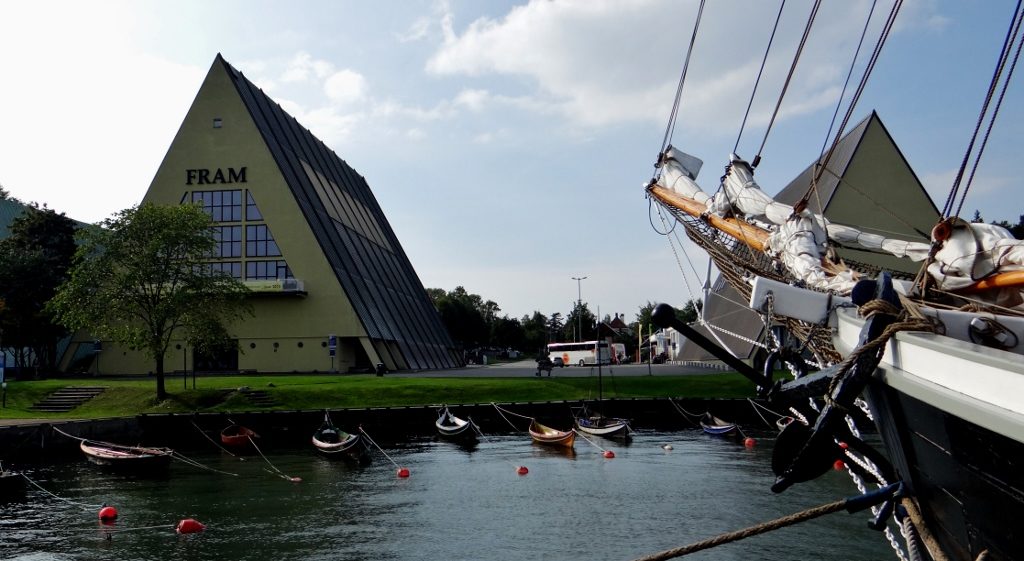
The Fram Museum, Oslo
The Frammuseet (100 NOK adult entry) contains two polar exploration ships, the Fram and the Gjøa, huge wooden things from the golden age of such travels, the one-time equivalents of the Space Shuttle and the Soyuz. There’s a vast amount of information in the museum, enough to take days to read and absorb, but for me the buzz came from being so close to something iconic, something associated with stuff I was taught as a child and which, in some obscure way, formed who I am over the years. At times I was elated to be there, a similar feeling to being close to ancient sculptures in Naples, Olympia and Delphi, or being sat on the base of the original Cooler at Stalag Luft II at Żagań in Poland.
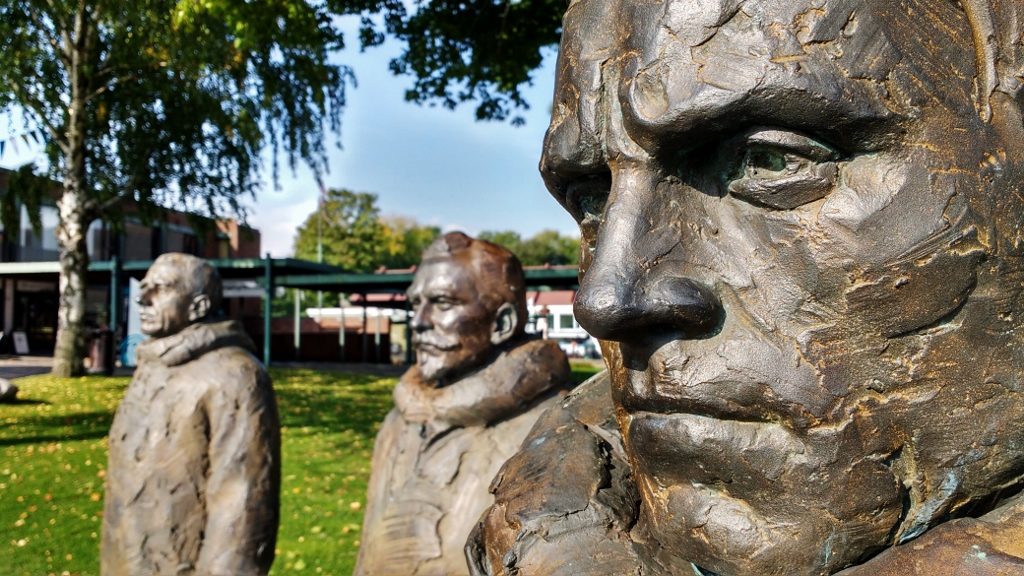
Amundsen and two of his crew. Made from seemingly crudely smoothed metal, this was one of the most beautiful and moving modern sculptures for me. The determination and pride shows through every man’s face.
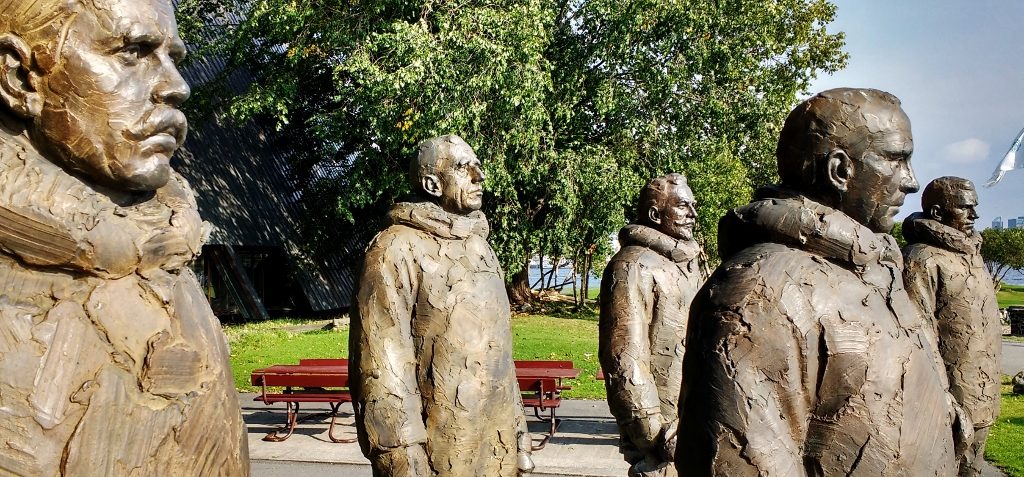
The feeling I got was they were all looking forwards. All of them faced years of danger on the voyage, dependant on one another for their very lives.
Walking into the Fram Museum I was mentally head butted by the ship. It’s huge! To see it enclosed in the building from the inside was a mind-bending experience in itself. To walk on it, to be in the same place Amundsen walked, to be inside looking at the tiny cabins where the men would be rocked and knocked on their race south with Scott, was simply fantastic.
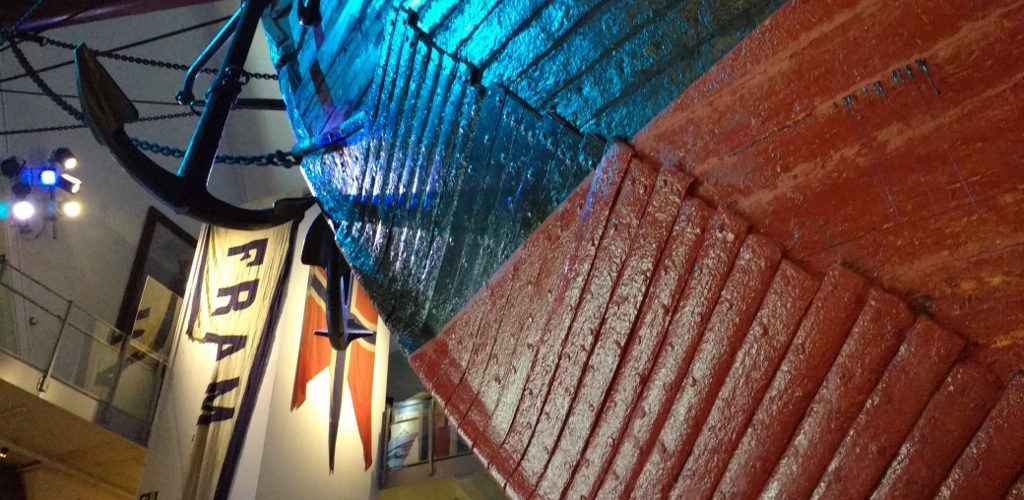
The Fram Polar Exploration Ship – note front end re-enforcement!
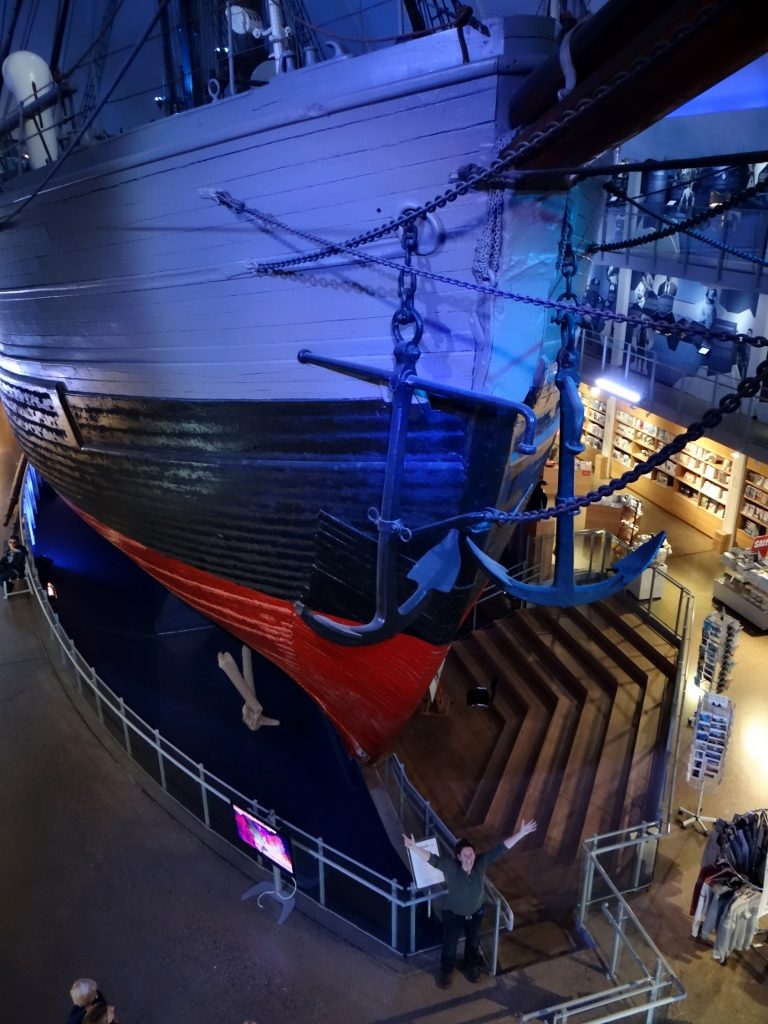
A Tiny Ju and the Fram
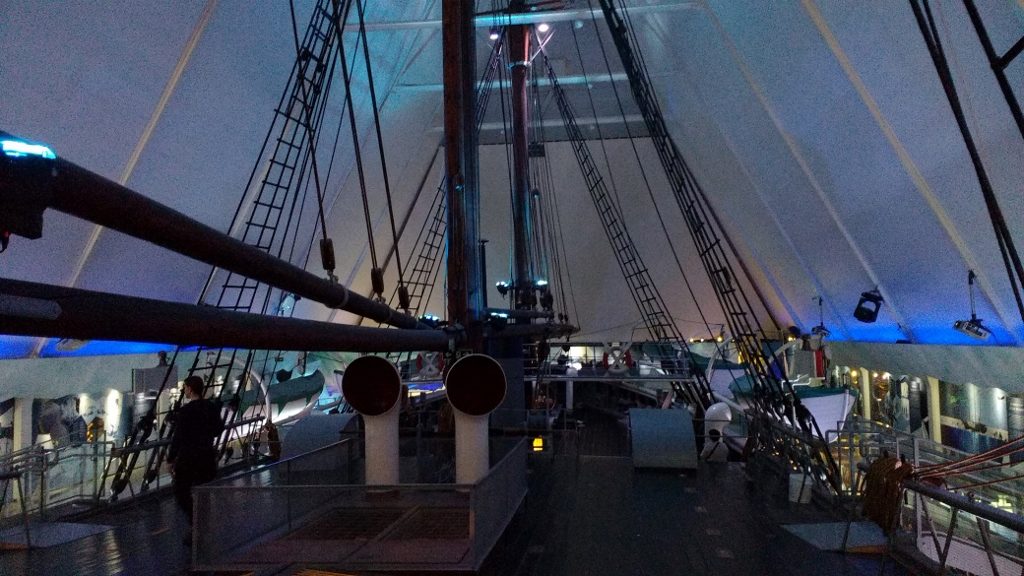
Onboard the Fram
We stood on the decks, took the helm and imagined what it must have taken to dedicate years of your life to these journeys into the ice. Sometimes the ships would be frozen for months and, as covered in detail in the temporary Shackleton exhibit, often they’d be crushed. Shackleton’s amazing escape from such a fate, and the way he managed to lead all of his men to safety, was very much the exception to the norm – hundreds of men died on these voyages into the frozen unknown.
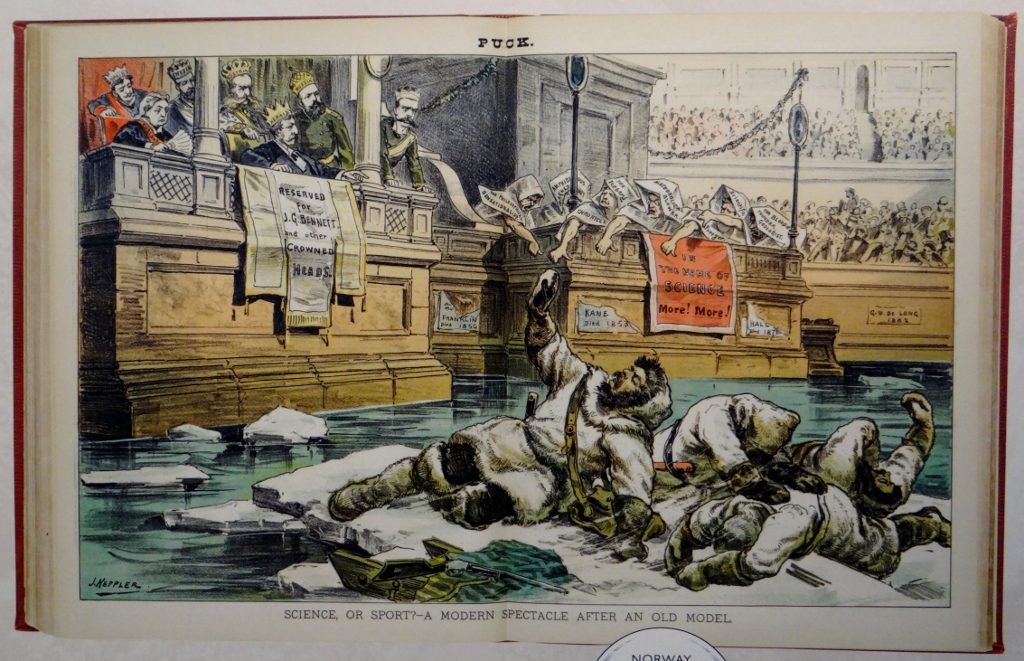
At the time of the early polar voyages, the explorers were likened to gladiators, and the value of the science carried out by the expeditions was compared with the human cost
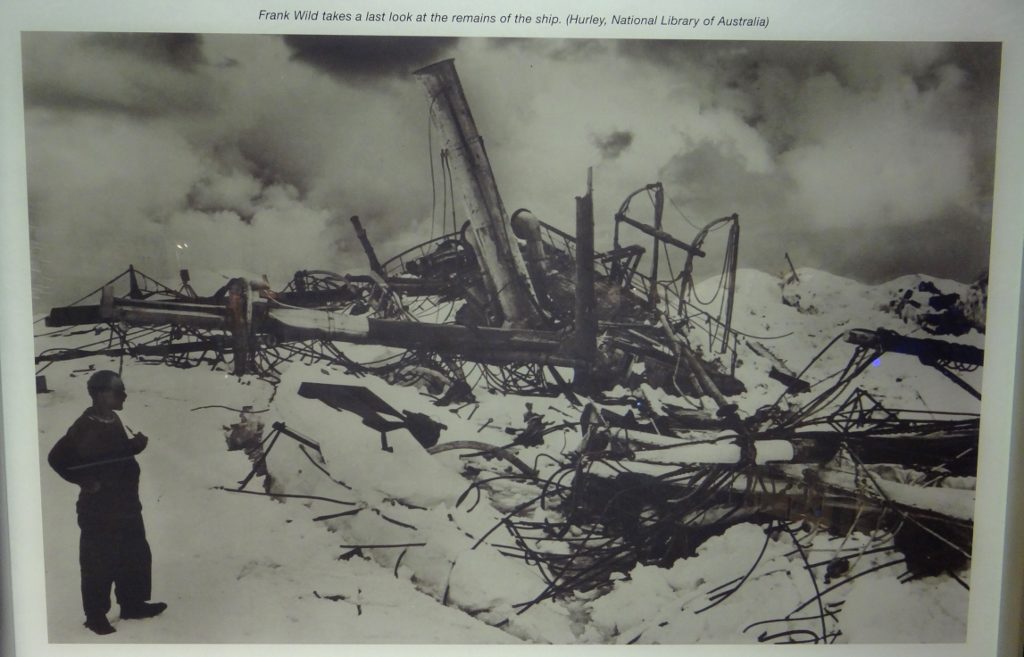
A fairly typical fate for a wooden ship trapped in ice. The Fram was designed to rise above the ice as it crushed in from the sides, helping avoid it being smashed apart
One fascination aspect of the South Pole competition between Amundsen and Scott came out. Both of the men were clearly heroic in what they were doing. The difference came out in their preparation. Amundsen had spent winters with the Inuits of north America, learning the age-old survival techniques, how to look after and use dogs, how to get skis to slide in extreme cold, to build igloos, to use loose furs to stay warm and dry, and many other small, but critically important points. Scott had experience in the bitter cold, but not this experience, and it eventually cost him the race, his life, and the lives of men in his team.
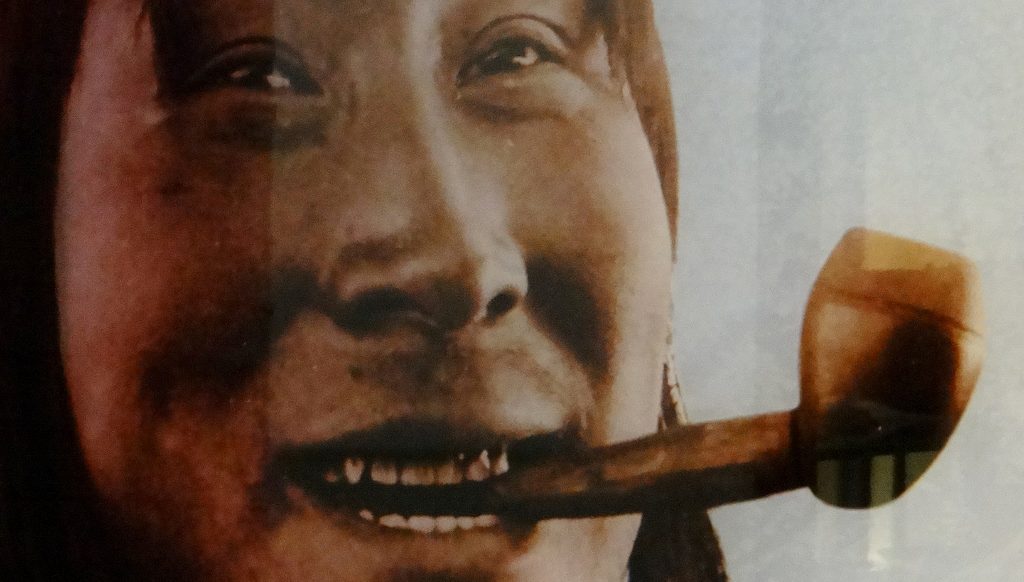
The Inuit picked up knowledge from the white man too – including pipe smoking…
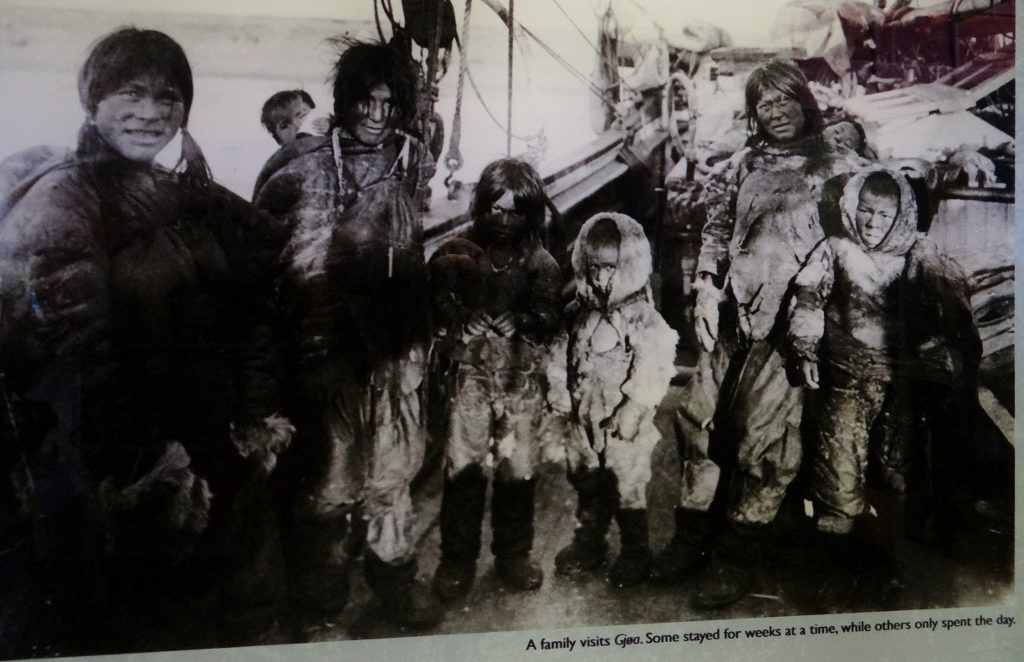
Some Inuit stole from Amundsen, but he forgave them and managed to build up a long, trusting relationship
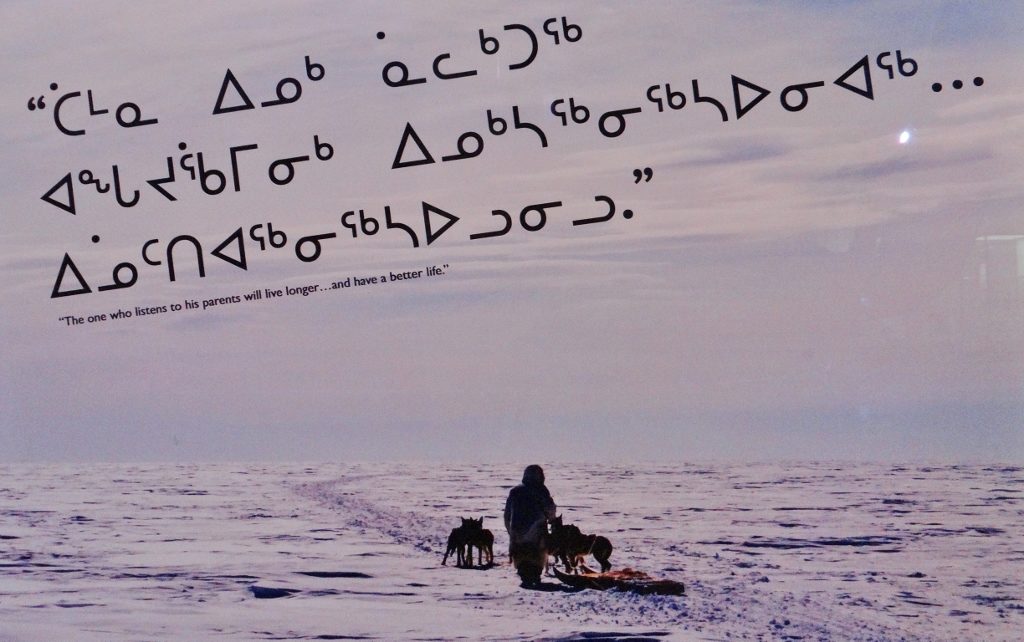
“The one who listens to his parents will live longer …and have a better life”
In among all the serious stuff there’s fun too. In one corner you can strap on a simulated sledge and see how many pounds you can pull (I could pull loads, but I suspect for about 5 minutes), test your reactions and shoot at polar animals (politically incorrect, historically correct) and in another you can step into a chilled, rocking deck and imagine you’re heading into the fridggid wilderness. If you can’t yet tell, we loved this museum, and me finding two 20 NOK coins left in the lockers did nothing to dampen my spirits (until I came to spend ’em on a beer and realised it’s Sunday…so no alcohol on sale).
On the way back to Zagan we eyeballed the Nobel Peace Centre, the severe-looking City Hall, the Parliament building and, of course, the Hard Rock Cafe. The city was alive with people, an urban contrast with most of the sparse, enormous Norway we’ve seen on our travels, a pleasant place for a few day’s exploration without your dog calling you home. More photos from yesterday follow below.
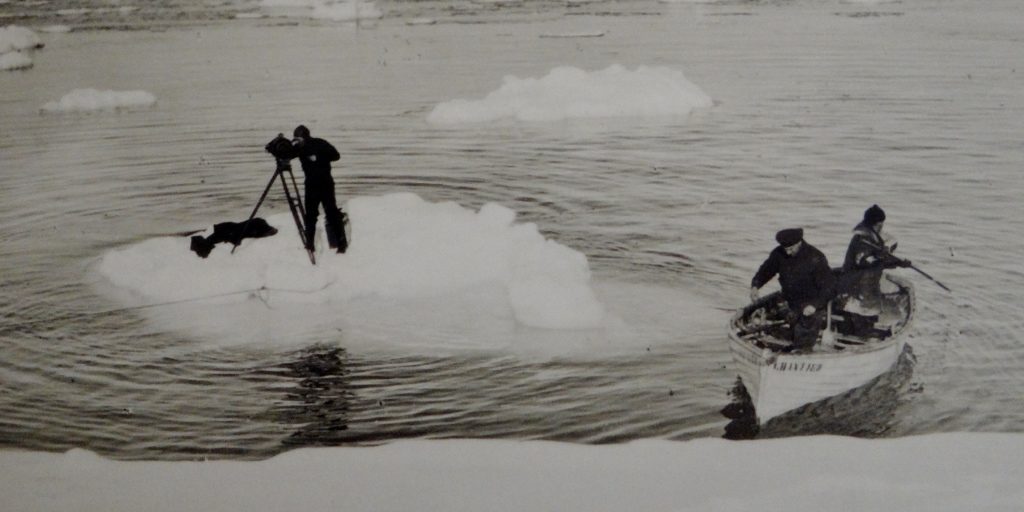
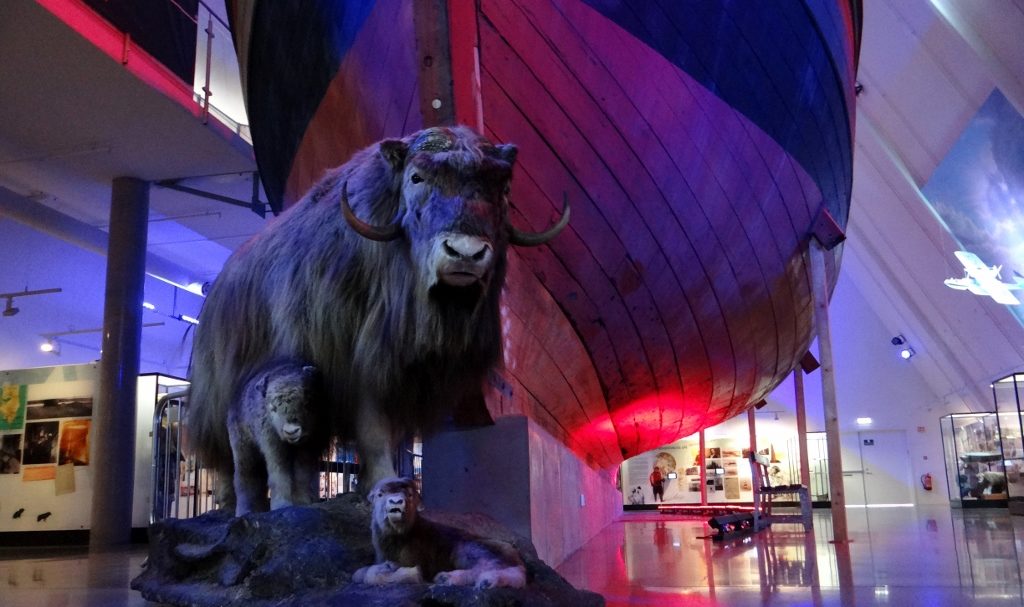
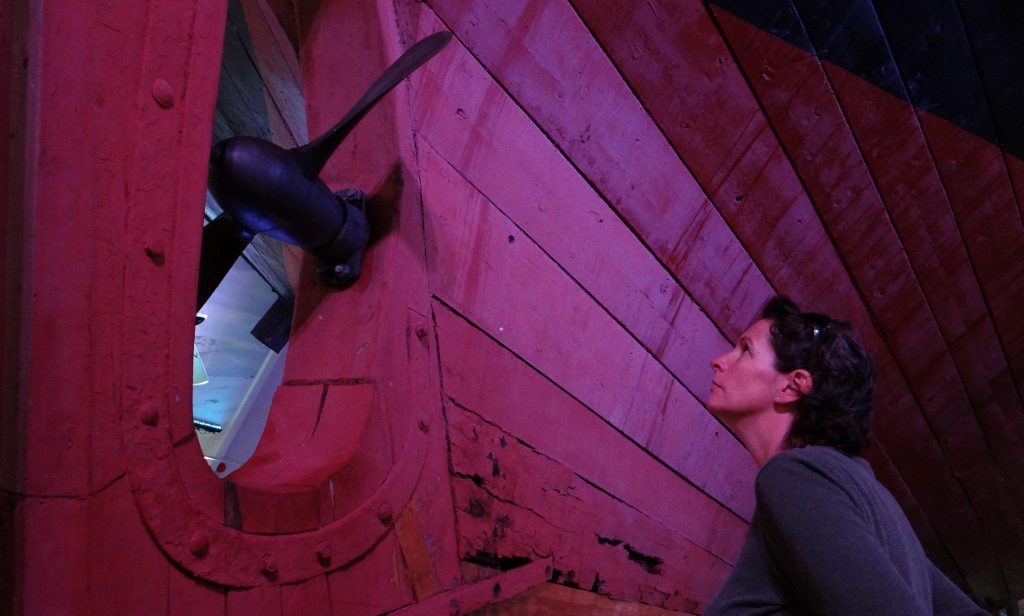
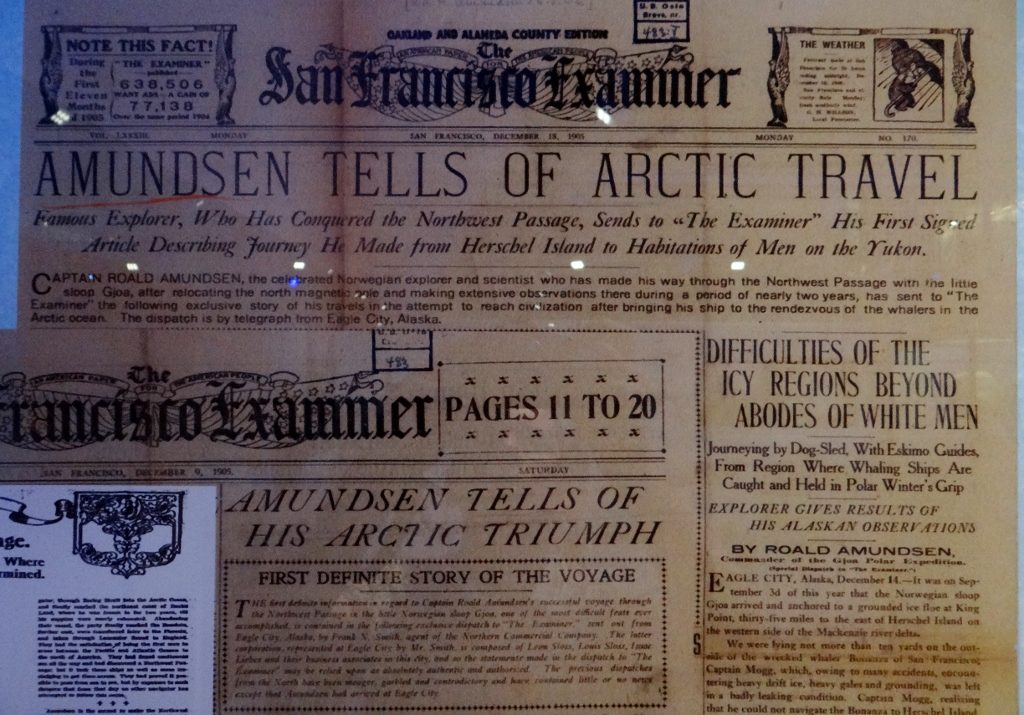
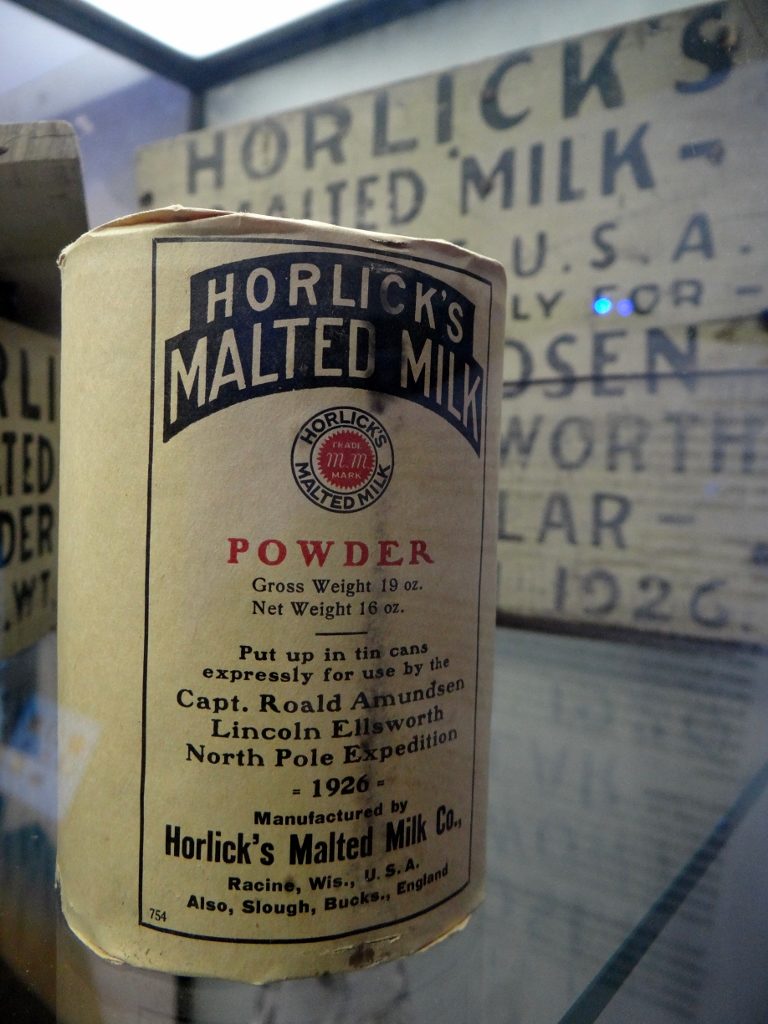
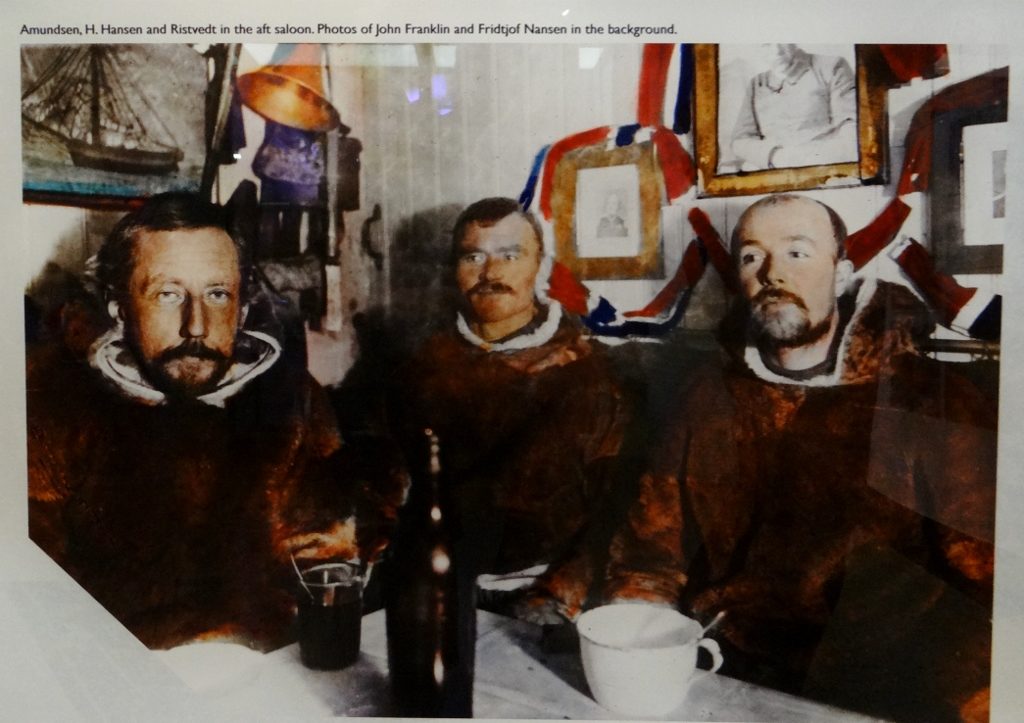
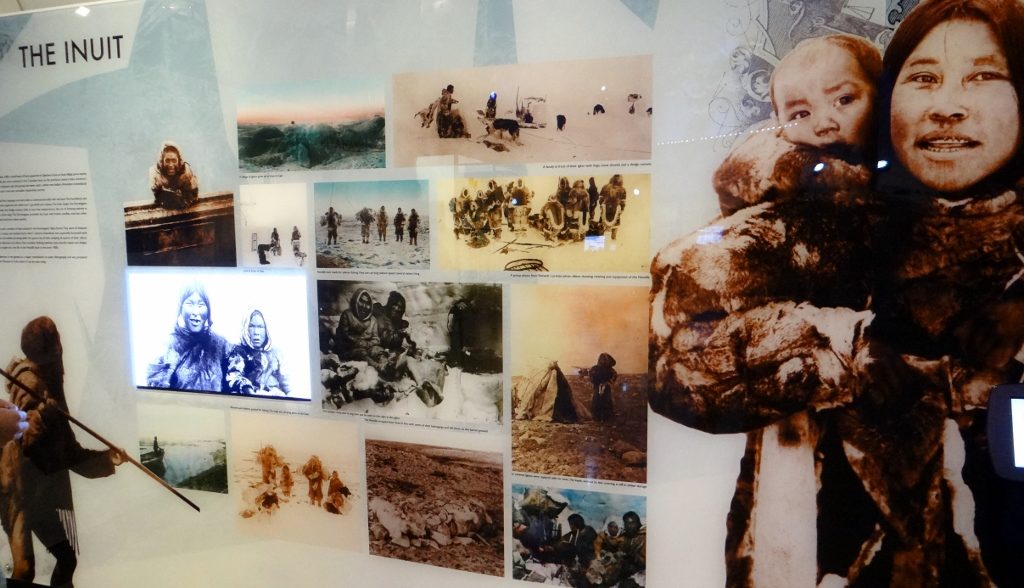
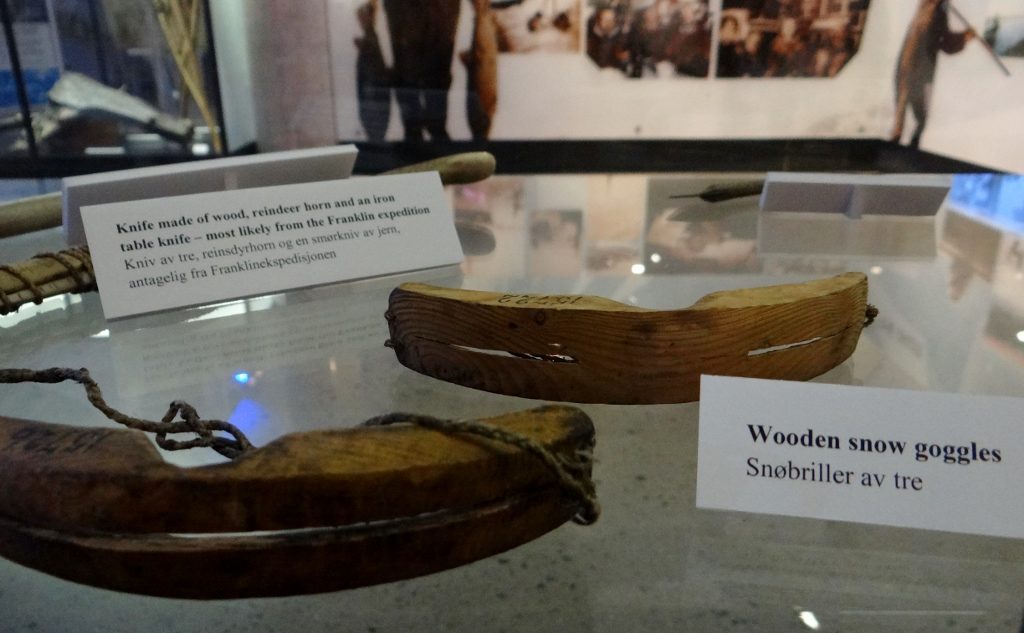
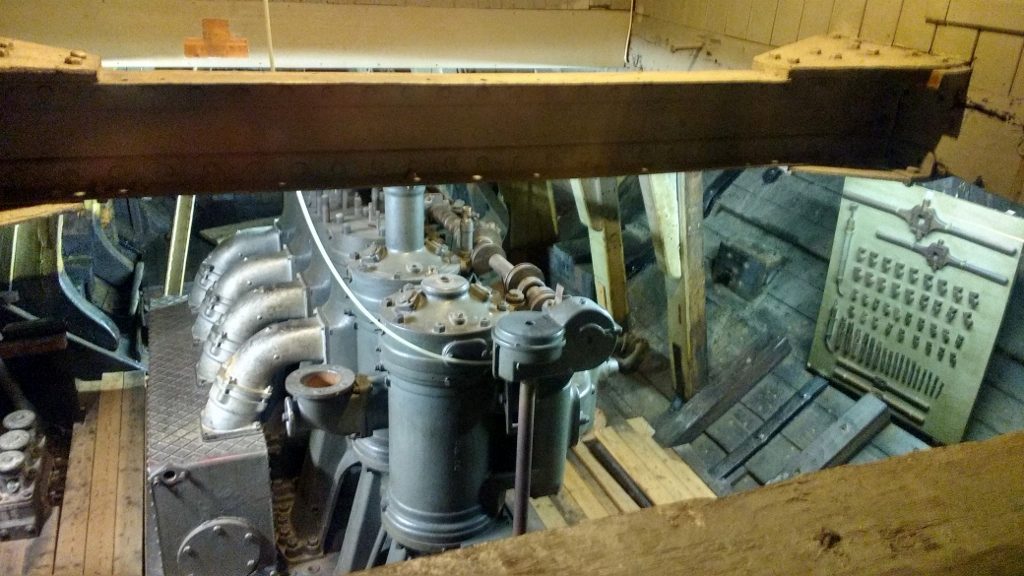
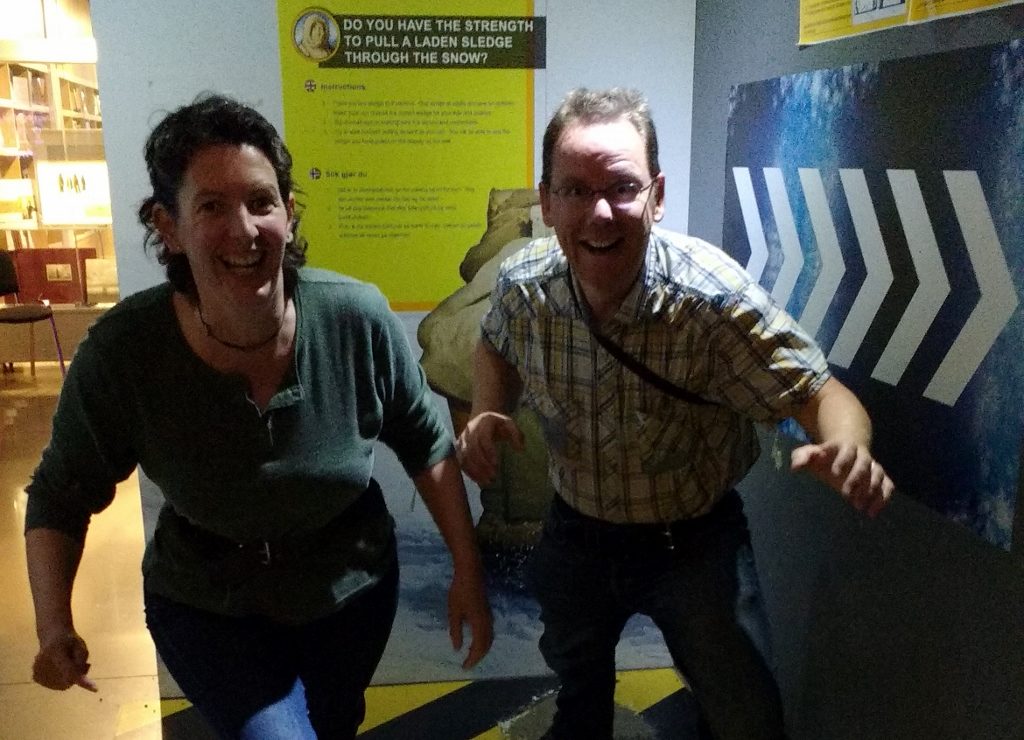
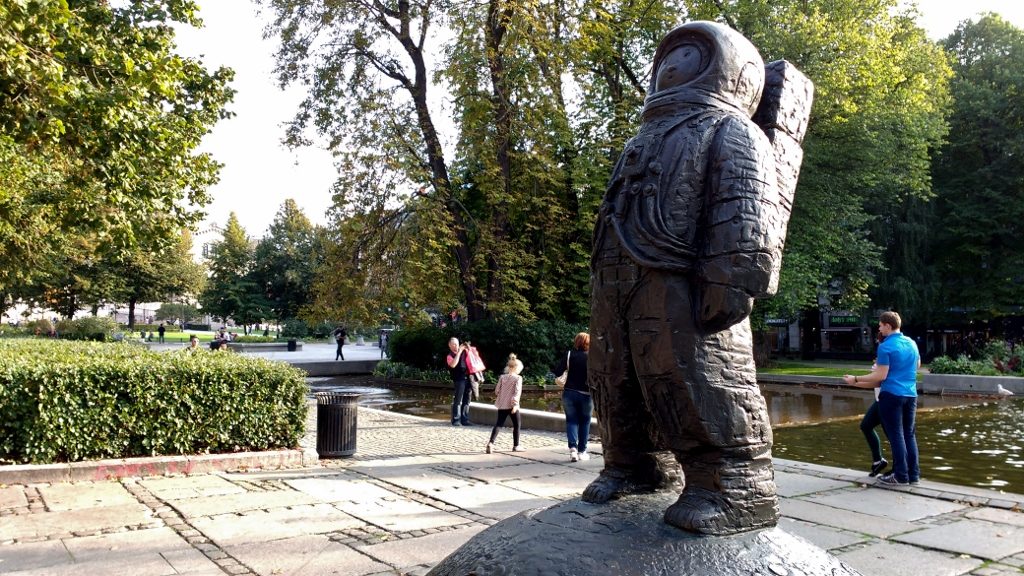
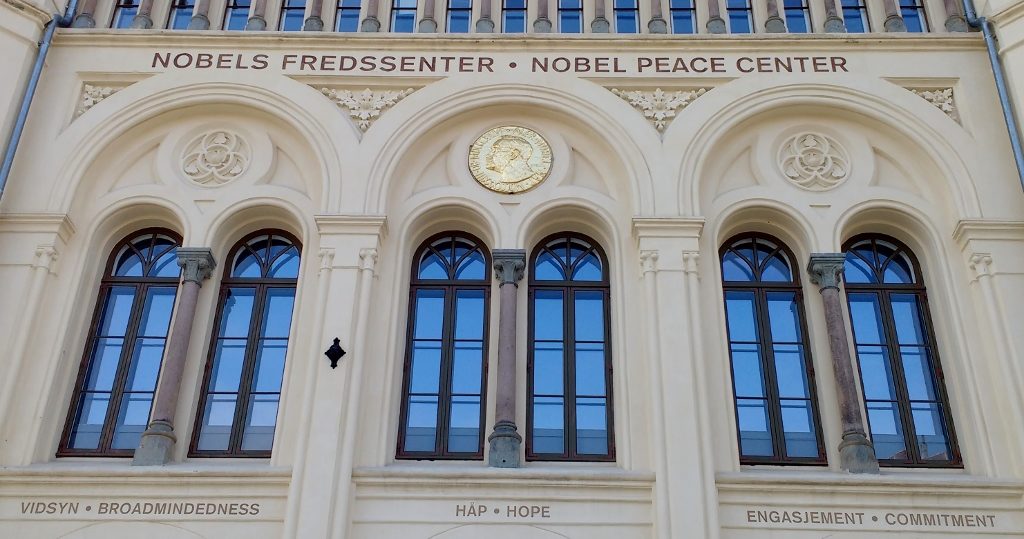
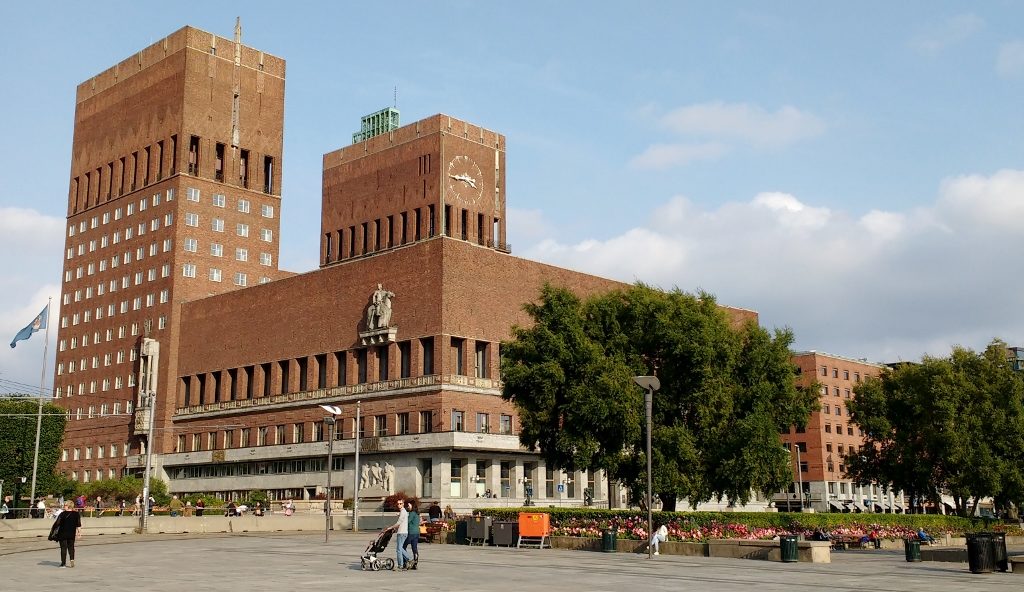
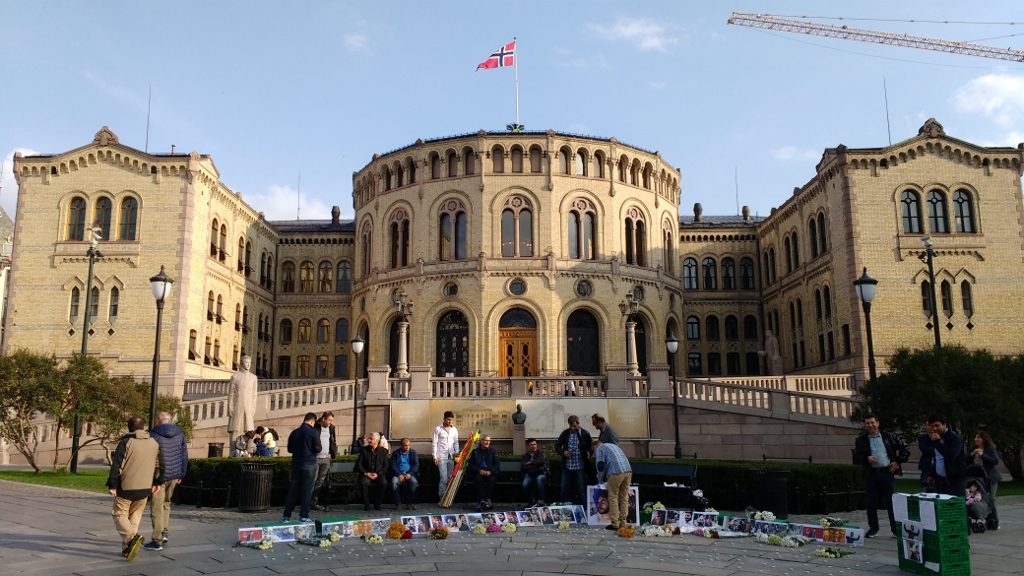
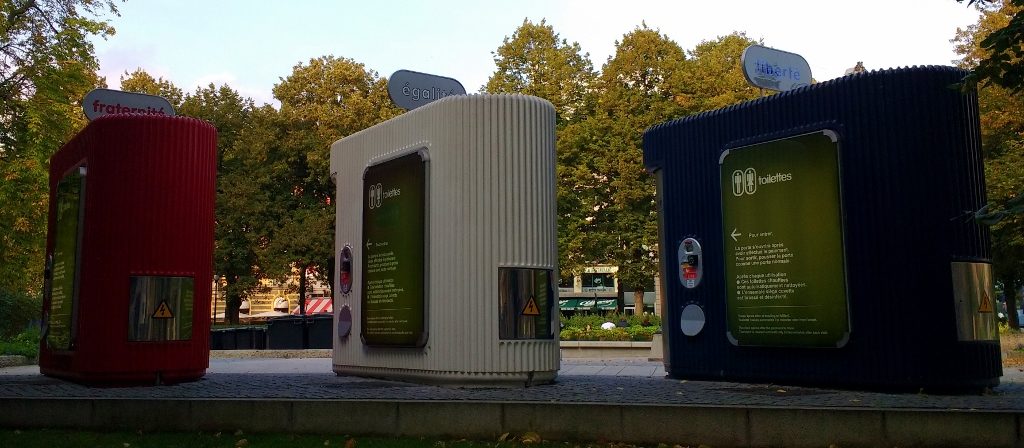
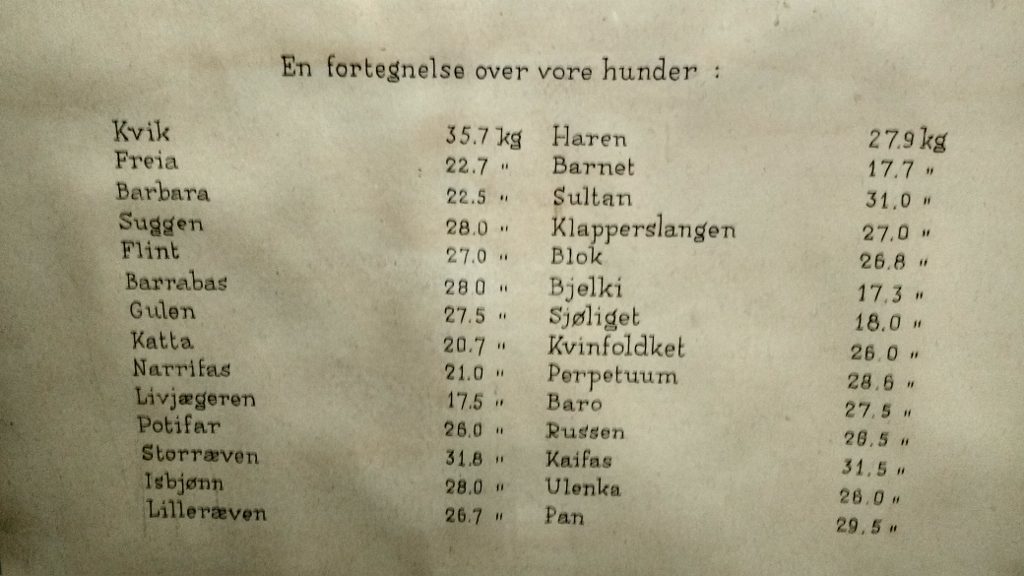
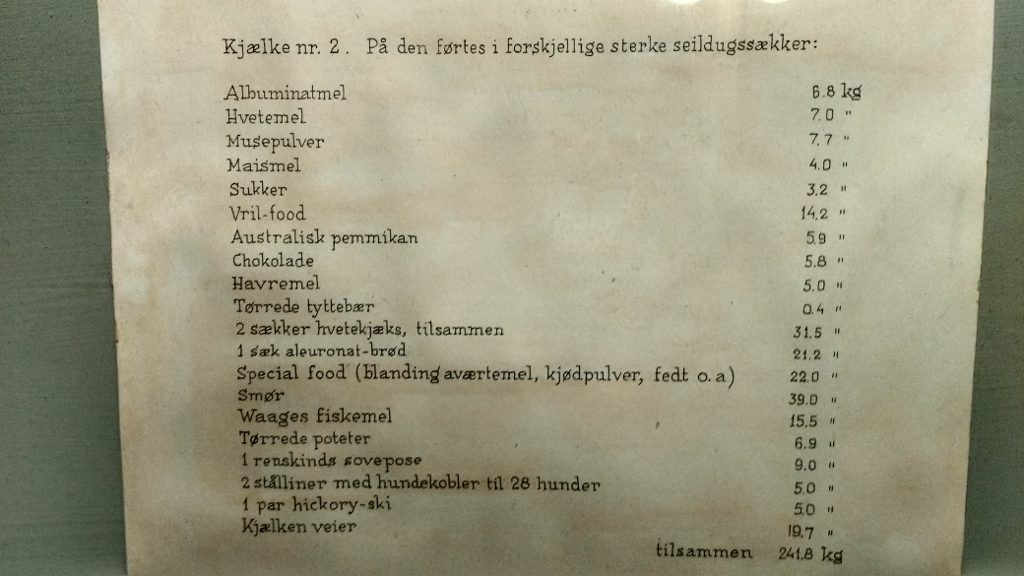
Cheers, Jay
Planning your own motorhome adventure to Norway?
You’ll find loads of tips in our free guide to Touring Norway by motorhome.
New to motorhome life,
planning your own motorhome adventure, or
looking for the perfect gift for the motorhomer in your life?
Check out our OurTour range of books.

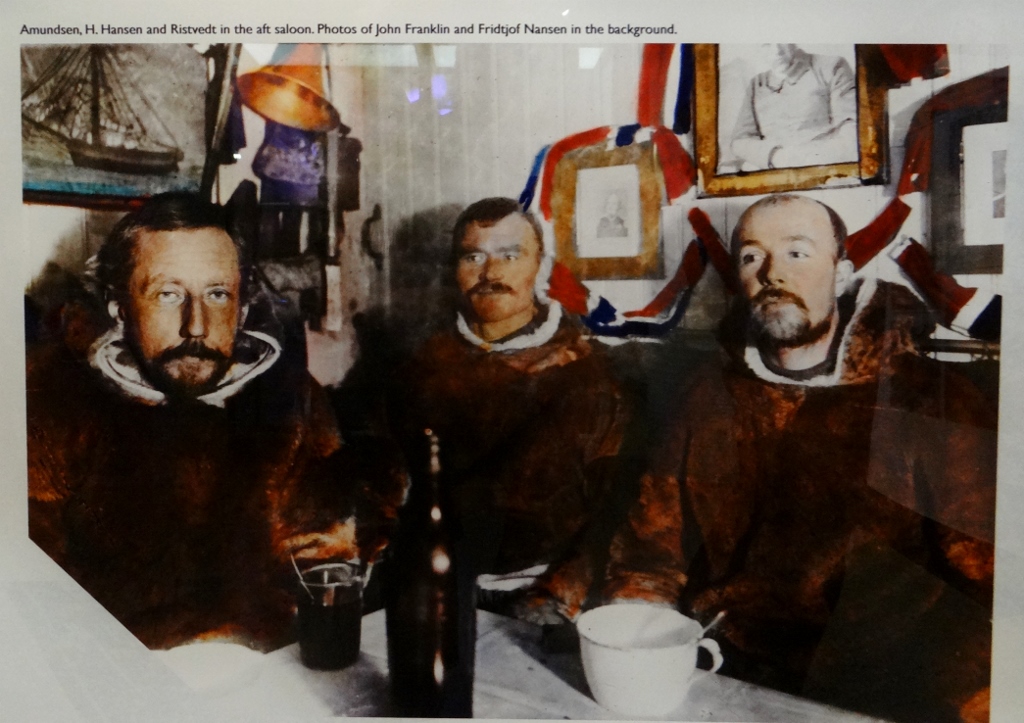

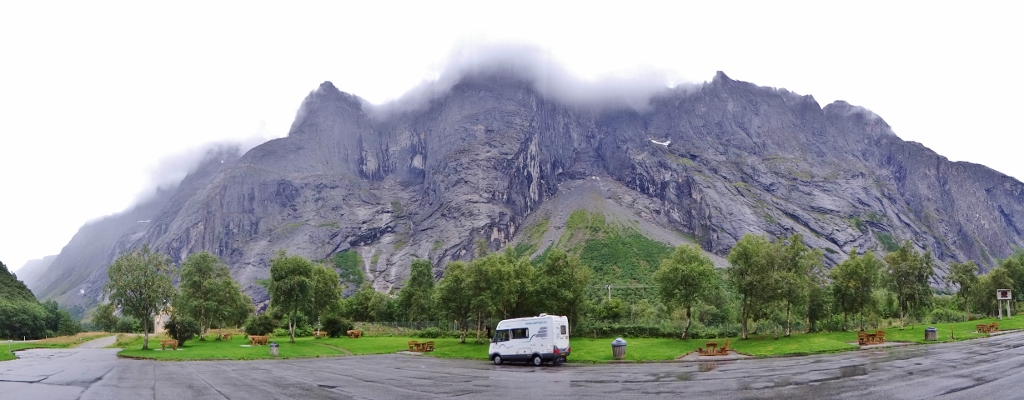
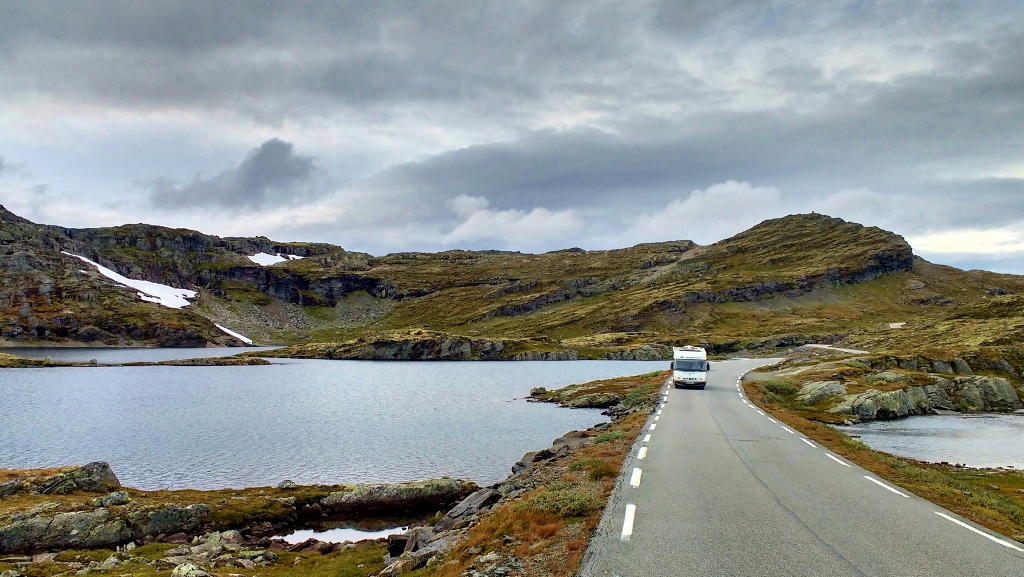
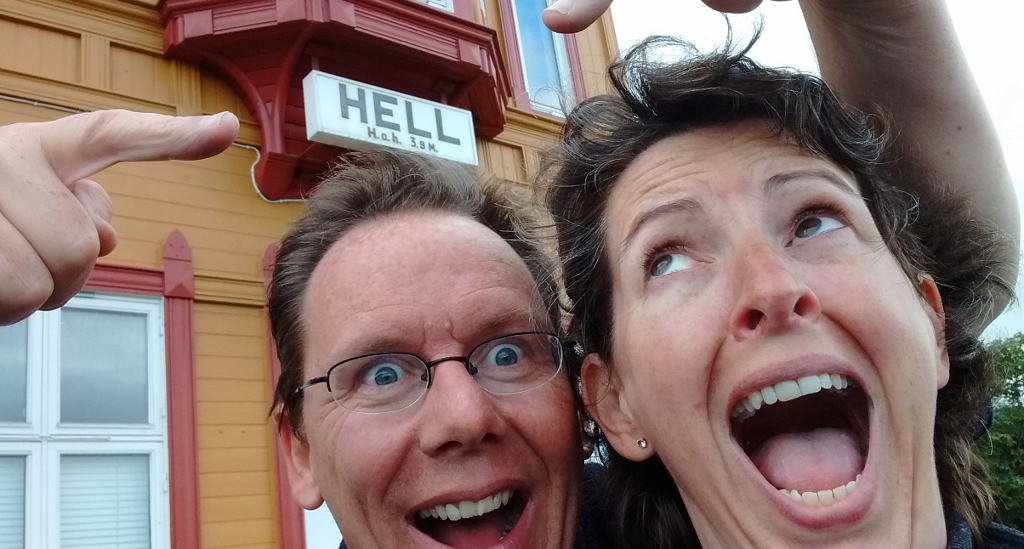
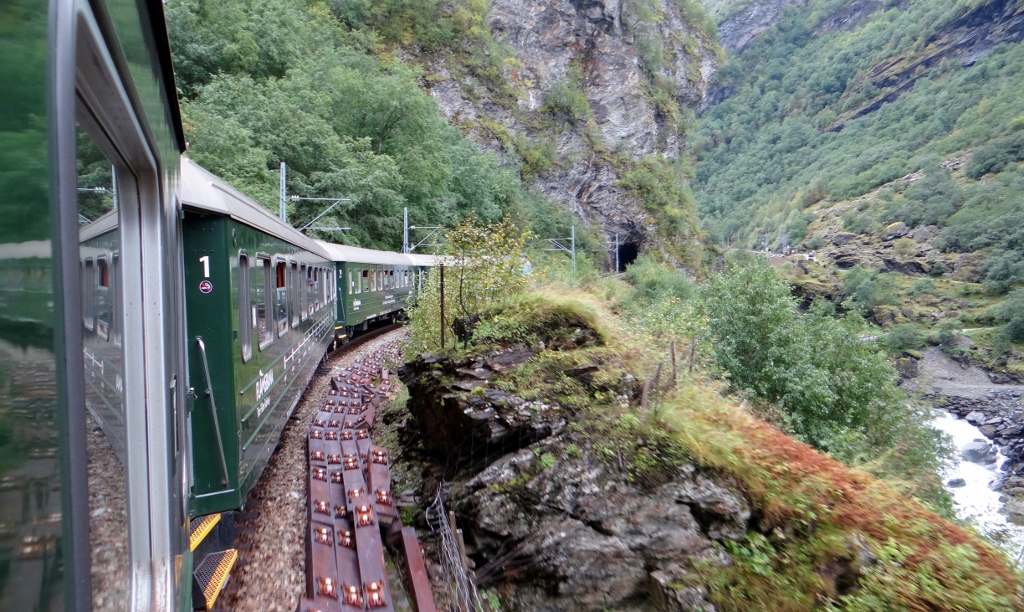
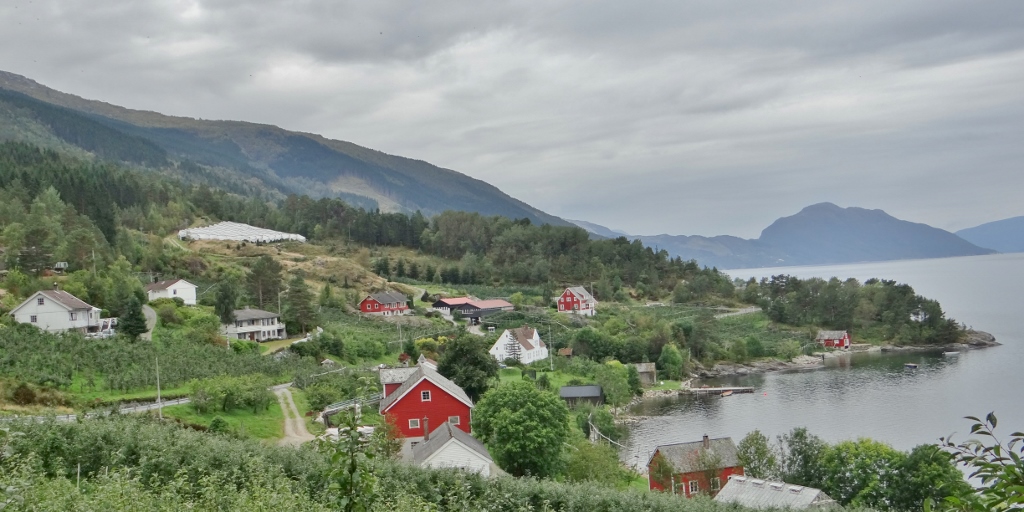
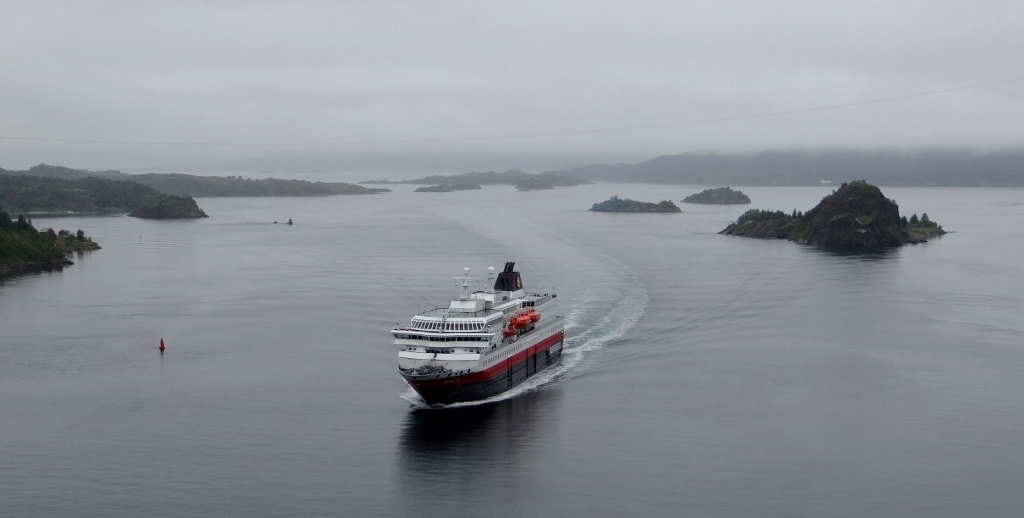
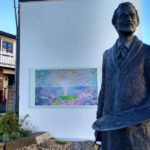
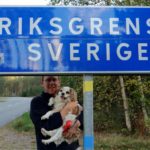
Do you reckon the Inuit with the pipe is related to Bill Baily?
An epic feat. Not sure I agree with Amundsen’s ethics on animal welfare, as throughout the return journey, dogs were shot and, consumed as food by both surviving dogs and the men…they were edible and expendable.
It’s ironic that it was Scott that ultimately proved Amundsens success, as Amundsen’s note to Scott was found on Scott’s body. Great post…Kindest, Wayne.
There’s a good comparison of the alternative approaches here: https://en.m.wikipedia.org/wiki/Comparison_of_the_Amundsen_and_Scott_Expeditions (more for me than you Wayne, sounds like you’re well-versed already)!
Amundsen set out with the deliberate aim to consume the dogs. He article likens it to the use of expendable rockets to reach the moon. Being a ‘dog person’, I couldn’t do this, but then there’s no way on Earth I’d have reached the pole either. Scott’s team were happy to eat the ponies too, which I might struggle with.
It seems that at the time the ‘winning team’ had to take the ‘expendable animal’ approach. Was this wilful murder of animals worth the prize of reaching the pole? It would seem the majority of humans on Earth at the time thought so; the projects seemed to consider the expedition members themselves expendable in a sense.